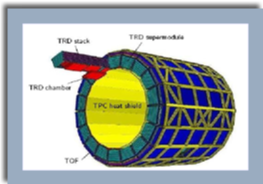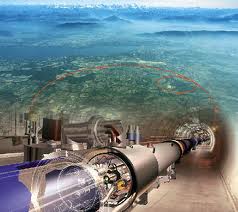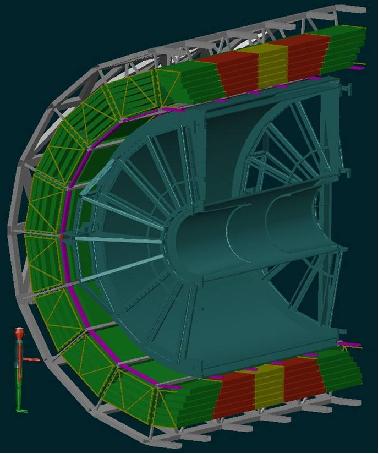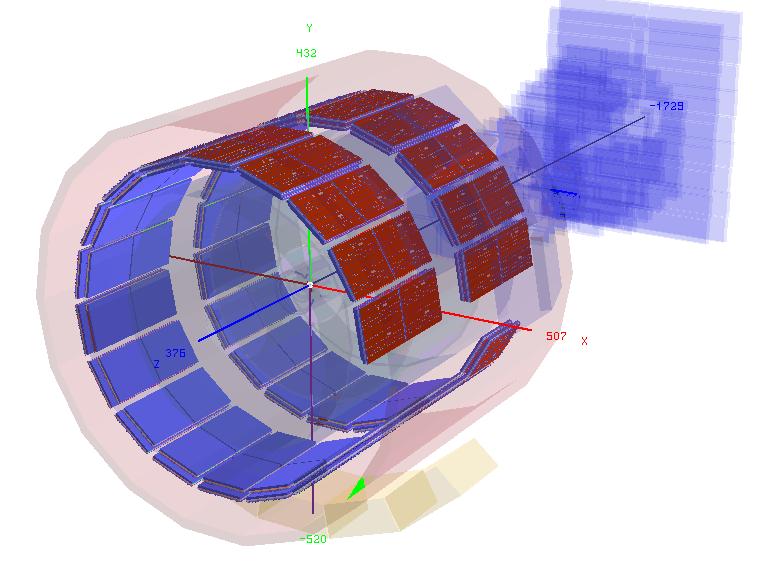

ALICE A Large Ion Collider Experiment



For the ALICE experiment, the LHC will collide lead ions to recreate the conditions just after the Big Bang under laboratory conditions. The data obtained will allow physicists to study a state of matter known as quark-gluon plasma, which is believed to have existed soon after the Big Bang. Collisions in the LHC will generate temperatures more than 100 000 times hotter than the heart of the Sun.



Physicists hope that under these conditions, the protons and neutrons will melt , freeing the quarks from their bonds with the gluons. This should create a state of matter called quark-gluon plasma, which probably existed just after the Big Bang when the Universe was still extremely hot. The ALICE collaboration plans to study the quark-gluon plasma as it expands and cools, observing how it progressively gives rise to the particles that constitute the matter of our Universe today.



Chamber construction sites:


IFIN-HH, Bucharest, Romania
JINR, Dubna, Rusia
GSI, Darmstadt , Germany
PI, Heidelberg, Germany
IK , Frankfurt, Germany

MoU: 20% of 540 chambers = 108 chambers (finished March 2008)
Over-task = 22 chambers (finished October 2008)
Total: 24% of 540 chambers = 130 chambers
The ALICE Transition Radiation Detector: Construction, operation, and performance
TPC-upgrade - 50% OROCs will be assembled & tested
The upgrade of the ALICE TPC with GEMs and continuous readout
MOVIE
Over-task = 22 chambers (finished October 2008)
Total: 24% of 540 chambers = 130 chambers
The ALICE Transition Radiation Detector: Construction, operation, and performance
TPC-upgrade - 50% OROCs will be assembled & tested
The upgrade of the ALICE TPC with GEMs and continuous readout
MOVIE
Hadron Physics Department - IFIN-HH
Contribution to ALICE Experiment @ LHC
Contribution to ALICE Experiment @ LHC
~ 2000 CPU cores
~ 1 PB storage
~ 1 PB storage



The completed ALICE detector showing the eighteen TRD modules (trapezoidal prisms in a radial arrangement).
Purpose:
- electron ID in central barrel p>1GeV/c
Parameters:
- 18 supermodules segmented in 6 layers, 5 stacks
- 540 modules ~ 750m2
- Lenghth: 7m
- X/X0 ~ 15%
- 28 m3 Xe/CO2 (85:15)
- 1.2 million channels
- 15 TB/s on-detector badwidth
- electron ID in central barrel p>1GeV/c
Parameters:
- 18 supermodules segmented in 6 layers, 5 stacks
- 540 modules ~ 750m2
- Lenghth: 7m
- X/X0 ~ 15%
- 28 m3 Xe/CO2 (85:15)
- 1.2 million channels
- 15 TB/s on-detector badwidth

ALICE-TRD chambers realized in Bucharest

































